The Petrochemical industry is a vital part of the global economy, responsible for converting raw hydrocarbons from crude oil and natural gas into essential chemical products. These products serve as building blocks for plastics, synthetic rubber, detergents, solvents, fertilizers, adhesives, dyes, and numerous industrial and consumer goods.
Petrochemical industry encompasses several processes in different types of plant such as Ethylene Plant ,BTX Plant , polymer Plant ,Chlor-Alkali/VCM , & Integrated Complex plant .
Here are some of the key processes in the Petrochemical industry.
- Steam Cracking (Olefins Production)
- Catalytic Reforming & Aromatics Production (BTX Units)
- Polymerization (Plastics and Resins Manufacturing)
- Alkylation & Isomerization (Fuel Additives and Intermediate Production)
- Distillation & Fractionation
- Gas Treatment & Sweetening (Desulfurization)
- Storage, Transfer & Loading Operations
- Utilities & Ancillary Systems (Boilers, Compressors, Cooling, etc.)
- Hydrogen Production (SMR & POX)
- Flare & Emergency Relief Systems
- Hydrotreating / Hydrocracking
- Ethylene Oxide / Ethylene Glycol Production
- Solvent Recovery & VOC Handling
- Chlor-Alkali & Vinyl Chloride Monomer (VCM) Production
Steam Cracking (Olefins Production)

Steam cracking is the primary method for producing light olefins such as ethylene, propylene, and butadiene, which serve as building blocks for various petrochemical products. In this process, hydrocarbon feedstocks like ethane, propane, or naphtha are heated to very high temperatures (750–875°C) in the presence of steam, preventing coke formation. Cracking occurs in furnace coils, and the resulting gases are rapidly cooled in a quench tower to stop further reactions. The cracked gas is then compressed and separated into individual components via distillation. Steam cracking is central to olefins production and downstream plastic manufacturing.
Types of Gases Present
Ethylene (C2H4) – Highly flammable gas with explosion risk; can leak from cracking furnaces and compressor systems.
Propylene (C3H6) – Flammable gas; leaks often occur at compressors or valve assemblies.
Hydrogen (H2) – Colorless, odorless, and highly flammable; prone to leakage due to small molecular size.
Carbon Monoxide (CO) – Toxic gas that may be present in furnace flue gases.
Methane (CH4) – Flammable light hydrocarbon byproduct; can escape from quench systems and flare lines.
Volatile Organic Compounds (VOCs) – General term for hydrocarbons released through vents, flanges, or during purging.
Nitrogen Oxides (NOx) – Generated during combustion; environmental pollutant.
Cracking Furnaces
The core section where hydrocarbons are thermally cracked inside radiant coils. Furnaces operate under high temperature and pressure, making them susceptible to leaks at burner assemblies, fuel gas connections, and inspection ports
Fixed Point Detectors: Install near furnace burner manifolds, fuel gas inlet lines, coil outlet flanges, and around furnace casing for early leak detection.
Portable Detectors: Used during furnace startup, shutdown, refractory inspection, and when checking fuel line gaskets, sight glasses, and manways.
Quench Tower & Associated Heat Exchangers
The quench tower rapidly cools cracked gas to halt further reaction. Heat exchangers in this area are exposed to thermal cycling, leading to potential gasket failures or tube leaks.
Fixed Point Detectors: Around quench tower base, exchanger flange areas, and gas recovery outlet lines.
Portable Detectors: During exchanger maintenance, leak testing of gasketed joints, and inspection of vent or relief valves.
Cracked Gas Compressor Section
Compresses the cracked gas mixture for downstream separation. Due to high pressure and vibration, seal failures or gasket leaks are common, especially in reciprocating or centrifugal compressors.
Fixed Point Detectors: At compressor casing seals, lube oil reservoir vents, shaft seal areas, and compressor knock-out drums.
Portable Detectors: During maintenance activities like seal replacement, performance testing, or routine inspection around packing glands and oil seals.
Distillation & Fractionation Columns
Separates various hydrocarbons like ethylene, propylene, and heavier products. Columns operate at different pressures and temperatures, and leaks may occur at column bottoms, overhead vapor lines, or reboiler exchangers.
Fixed Point Detectors: : Near column bottoms, reflux pumps, reboiler units, overhead condensers, and top vents.
Portable Detectors: Used during tray inspection, valve maintenance, sampling operations, and flange re-tightening.
Flare Header, Knock-out Drums & Venting Points
Collects off-gases and directs them to the flare. Leaks can occur due to valve malfunction, seal failure, or overpressurization during emergency venting.
Fixed Point Detectors: : Around flare knock-out drum, flare header flanges, purge gas lines, and base of the flare stack.
Portable Detectors: During purging operations, emergency depressurization checks, valve testing, and during safety inspections.
Catalytic Reforming & Aromatics Production (BTX Units)
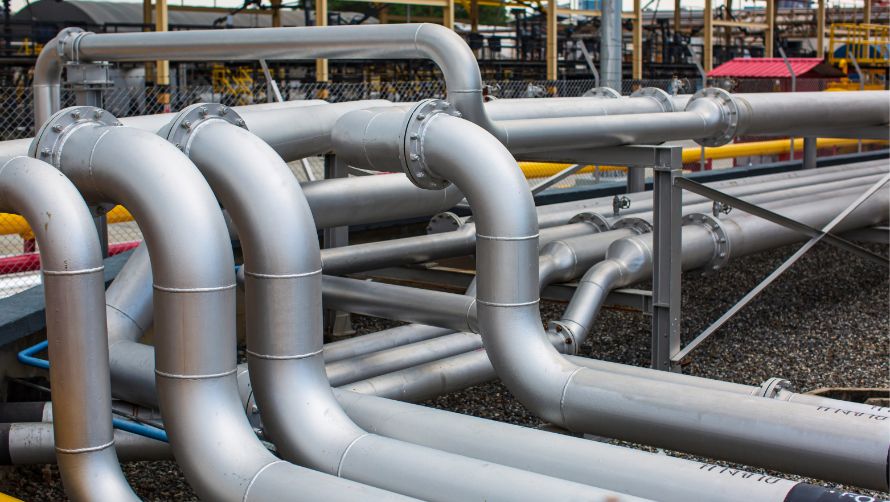
Catalytic reforming is a critical refining process that upgrades low-octane naphtha into high-octane reformate for gasoline blending and produces valuable aromatics such as benzene, toluene, and xylene (BTX). The process uses platinum-based catalysts in fixed-bed reactors under high temperature (450–520°C) and pressure (5–35 bar) to facilitate dehydrogenation, isomerization, and cyclization reactions. Hydrogen gas is generated as a byproduct and often recycled. The reformate is sent to extraction units to isolate aromatics, which are then purified for petrochemical use.
Types of Gases Present
Hydrogen (H2) – Produced during dehydrogenation; highly flammable and easily leaks through seals and valves.
Carbon Monoxide (CO) – Can be formed in heaters; toxic gas if leaked.
Methane (CH4) – May be present in gas off-streams; flammable.
Volatile Organic Compounds (VOCs) – Emitted from naphtha feed, product tanks, and during maintenance activities.
Benzene (C6H6) – A toxic, carcinogenic aromatic compound; vapors are hazardous even at low concentrations.
Toluene (C7H8) – Flammable aromatic with neurotoxic effects on prolonged exposure.
Xylene (C8H10) – Volatile and harmful by inhalation; present in vapor leaks from product lines.
Reactor Section
Contains multiple fixed-bed catalytic reactors operating under high temperature and pressure. Leaks may occur from manways, flanges, catalyst loading ports, and hydrogen-rich recycle lines.
Fixed Point Detectors: Near reactor inlet/outlet flanges, recycle gas compressors, relief valves, and hydrogen-rich zones.
Portable Detectors: During catalyst loading/unloading, hydrogen leak testing, or when inspecting flanges and access ports.
Naphtha Feed Preheaters & Furnaces
Used to heat feedstock before entering reactors. Exposed to high thermal stress, which may cause flange, burner, or tube leaks.
Fixed Point Detectors: Around furnace burner zones, fuel gas inlets, radiant/convection section transitions, and near flanged connections.
Portable Detectors: During burner inspections, startup/shutdown operations, and heat exchanger maintenance.
Hydrogen Recycle Compressor Section
Compresses hydrogen gas for recycling to reactors. Seal failures, oil leaks, and gasket failures are common risk points for hydrogen loss.
Fixed Point Detectors: : Near compressor casing, shaft seals, pressure relief valves, and knock-out drums.
Portable Detectors: Used during seal checks, compressor overhaul, and routine performance checks.
Aromatics Separation Unit (BTX Extraction)
Reformate is sent to units like solvent extraction or adsorption systems to separate benzene, toluene, and xylene. Aromatics and VOCs can leak from valves, trays, or tanks
Fixed Point Detectors: : Around benzene/toluene storage tanks, solvent pumps, extraction columns, and vent lines.
Portable Detectors: During solvent changeover, tank gauging, valve inspection, and sampling operations
Storage and Transfer Lines (Aromatics & Reformate)
Aromatics are stored in tanks and transferred via pipelines. Leaks can occur from floating roofs, breather valves, and pump seals.
Fixed Point Detectors: : At tank tops, around transfer pump seals, loading arms, and vapor recovery units.
Portable Detectors: During tank maintenance, seal inspections, or while checking line integrity and loading/unloading systems.
Polymerization (Plastics and Resins Manufacturing)
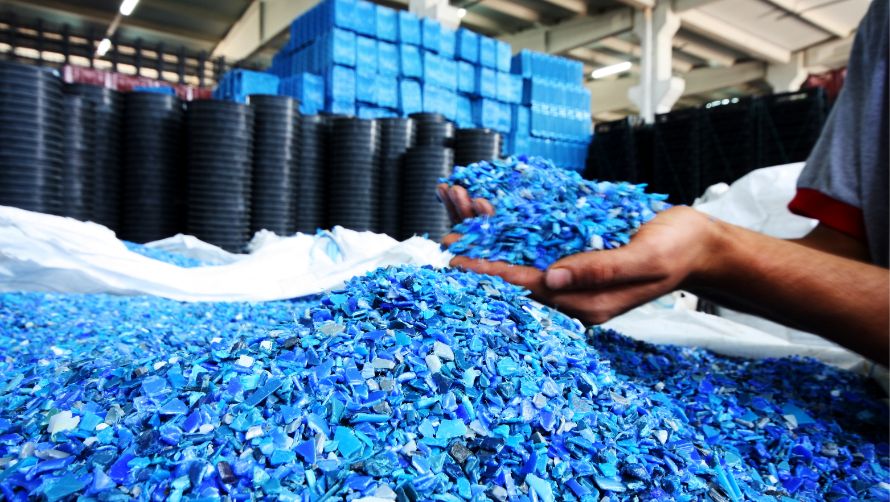
Polymerization is the process of converting monomers like ethylene, propylene, styrene, or vinyl chloride into high-molecular-weight polymers such as polyethylene (PE), polypropylene (PP), polystyrene (PS), and polyvinyl chloride (PVC). This process can be performed via different methods: addition (chain-growth) polymerization or condensation polymerization, and in various phases such as gas-phase, slurry, or solution processes. Polymerization reactors operate under specific pressure, temperature, and catalyst conditions depending on the desired product. The end products are extruded, pelletized, and transported for further plastic and resin manufacturing.
Types of Gases Present
Hydrogen (H2) – Used in some catalyst systems; flammable with small molecular leakage risk
Volatile Organic Compounds (VOCs) – Emitted during degassing, drying, and cleaning operations
Ethylene (C2H4)– A flammable monomer gas; leaks may occur during feed handling or purging.
Propylene (C3H6) – Flammable and explosive; leaks can arise from reactor lines and compressor systems.
Vinyl Chloride Monomer (VCM) – Highly toxic, carcinogenic gas used in PVC production; strict control is required.
Butadiene (C4H6) – Highly flammable and potentially carcinogenic; used in synthetic rubber and plastic.
Inert Gases (Nitrogen, Argon) – Used for purging and blanketing; can displace oxygen and cause asphyxiation in confined spaces.
Polymerization Reactors
Core vessels where monomer gases are polymerized under controlled conditions. Leaks can occur from agitator seals, sight glasses, valves, and pressure relief systems
Fixed Point Detectors: Near reactor base flanges, monomer feed inlet, catalyst injection ports, and pressure relief valves.
Portable Detectors: During startup, catalyst loading/unloading, vent line inspection, or maintenance checks on gaskets and mechanical seals.
Monomer Feed & Compression Units
Monomer gases are compressed and fed into the reactor. Compressors and feed lines are exposed to high pressure and vibration, increasing the risk of flange or seal leaks.
Fixed Point Detectors: Around compressor seals, monomer gas manifolds, valve stations, and line flanges.
Portable Detectors: During feed line maintenance, valve inspection, compressor startup, or seal testing activities.
Degassing & Vent Recovery Systems
Excess unreacted monomers are recovered through degassing systems. These sections handle flammable and toxic gases like VCM or butadiene.
Fixed Point Detectors: : Near degasser vents, vacuum pumps, off-gas headers, and solvent recovery units.
Portable Detectors: During degassing maintenance, vent inspections, sampling, and regeneration cycles.
Polymer Drying, Extrusion & Pelletizing Units
After polymerization, material is dried, extruded, and pelletized. VOCs and monomer vapors may be emitted during heating and solvent removal.
Fixed Point Detectors: : At exhaust stacks, solvent vapor condensers, extrusion vents, and drying chambers.
Portable Detectors: During hot cleaning, filter changing, pelletizer inspection, and when checking dryer hatches and sampling ports.
Storage Silos and Transfer Systems
Polymers are stored in silos before packaging or transport. Transfer lines and storage vessels may emit residual VOCs or monomers during venting or loading.
Fixed Point Detectors: : At silo tops, pressure relief vents, loading chutes, and pneumatic conveying systems.
Portable Detectors: During silo maintenance, product changeovers, line cleaning, and periodic inspections of vent filters and hatches.
Alkylation & Isomerization

Alkylation and isomerization are key refining processes used to improve the octane number of gasoline blending components.
Alkylation involves combining light olefins (like propylene and butylene) with isobutane in the presence of strong acid catalysts (sulfuric acid or hydrofluoric acid) to form high-octane branched-chain paraffins (alkylate).
Isomerization rearranges straight-chain hydrocarbons like n-butane and n-pentane into their branched isomers (isobutane, isopentane), which have higher octane ratings.
Both processes require controlled conditions and involve toxic and flammable gases, along with corrosive acid handling, making gas detection and safety systems critical.
Types of Gases Present
Hydrogen (H2) – Flammable gas used in isomerization and in hydrogenation reactions.
Volatile Organic Compounds (VOCs) – Emitted from storage, vents, or purging during feedstock and product handling.
Hydrofluoric Acid Vapor (HF) – Extremely toxic, corrosive gas used in HF alkylation units; causes severe health hazards.
Isobutane (C4H10) – Highly flammable gas used as feedstock; leaks can lead to fire/explosion hazards.
Propylene / Butylene (C3H6 / C4H8) – Flammable olefins used in alkylation; leaks can occur at compressor or valve points.
Hydrogen Sulfide (H2S)– May be present in trace quantities; toxic and corrosive.
Alkylation Reactor Section (HF/Sulfuric Acid)
Central unit where the acid catalyst reacts with olefins and isobutane. Leaks may arise from acid circulation pumps, reactor inlet/outlet lines, and acid-to-hydrocarbon contact points.
Fixed Point Detectors: Near reactor body, acid settlers, acid circulation pumps, and seal areas. Install HF detectors or sulfuric acid vapor sensors as required.
Portable Detectors: During acid unloading, seal replacement, or when inspecting flanged joints and maintenance operations involving catalyst system.
Acid Storage & Handling System
Strong acid (HF or H₂SO₄) is stored and circulated through piping and tanks. Leaks pose both toxic vapor and chemical burn risks.
Fixed Point Detectors: Around acid storage tanks, pump seals, transfer lines, and tank vent systems.
Portable Detectors: Used when connecting or disconnecting acid transfer lines, conducting inspections around gaskets, or during maintenance.
Isomerization Reactor & Hydrogen Feed System
This unit operates with hydrogen in high-pressure reactors using metal-based catalysts. Leaks may occur from reactor vessels, hydrogen piping, and pressure safety valves.
Fixed Point Detectors: : Near reactor outlet/inlet nozzles, hydrogen feed lines, and pressure control valves.
Portable Detectors: During catalyst loading/unloading, hydrogen leak checks, or equipment isolation.
Compressor & Heat Exchanger Sections
Compressors and exchangers handle pressurized hydrocarbon mixtures. Vibration and temperature variations may lead to seal, flange, or gasket failures.
Fixed Point Detectors: : Near compressor seals, exchanger tube sheets, and flange joints.
Portable Detectors: For gasket integrity checks, post-maintenance leak testing, and during exchanger bundle pullout.
Feed and Product Storage Tanks
Feedstocks (olefins, isobutane) and alkylate product are stored in tanks connected to vent and loading systems. VOC and flammable gas leaks are common during handling.
Fixed Point Detectors: : At tank vent lines, floating roof seals, loading arms, and pump seals.
Portable Detectors: During sampling, tank gauging, loading/unloading, or when verifying seal integrity.
Distillation & Fractionation
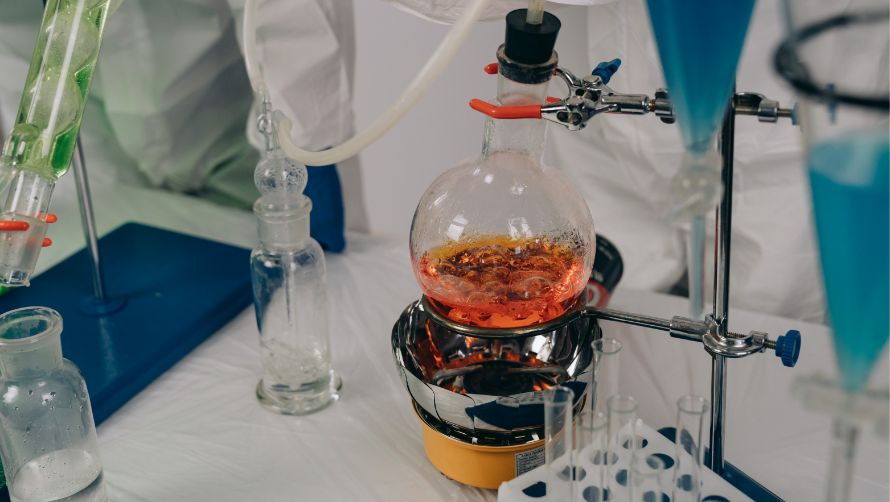
Distillation and fractionation are foundational separation processes used in petrochemical plants to separate complex hydrocarbon mixtures into individual components or fractions based on their boiling points.
Atmospheric distillation is the primary step, where crude or mixed hydrocarbon feedstock is heated and separated into gas, naphtha, kerosene, diesel, and heavier fractions.
Vacuum distillation follows to separate heavier residues under reduced pressure to prevent thermal cracking.
Fractionation towers are also used throughout petrochemical plants to refine feedstocks or intermediate products further, ensuring purity for downstream processing (e.g., in olefins, aromatics, or solvents production).
These towers typically operate at high temperatures and pressures and contain multiple trays or packing to promote vapor-liquid contact.
Types of Gases Present
Volatile Organic Compounds (VOCs) – Emitted from vents, leaks, or during maintenance; contribute to environmental and health hazards.
Hydrogen Sulfide (H2S)– Toxic, corrosive gas often present in sour feedstocks
Hydrocarbon Vapors (C₁–C₁₀+) – Includes methane, ethane, propane, butane, and other flammable components; risk of fire and explosion.
Benzene, Toluene, Xylene (BTX) – VOCs with toxic and flammable properties; can be emitted from aromatic-rich streams.
Distillation Column Overhead System
This section includes overhead condensers, reflux drums, and vent systems where light hydrocarbons and VOCs are handled.
Fixed Point Detectors: Near reflux drum vents, pressure control valves, condenser outlets, and vent stacks.
Portable Detectors: During inspection of relief valves, sampling ports, or flange connections for vapor leaks.
Reboilers & Bottoms System
Heats the liquid from the bottom of the tower; can leak high-temperature hydrocarbons or vapors.
Fixed Point Detectors: Around reboiler flanges, tube bundles, and return lines to the column.
Portable Detectors: When checking for leaks during exchanger maintenance, shutdowns, or gasket replacements.
Tray/Column Manways and Access Points
Used for inspection or maintenance access; may release residual hydrocarbons during opening.
Fixed Point Detectors: : Not typical, but area gas monitors may be used temporarily during access.
Portable Detectors: Mandatory when opening manways or sampling ports; used for atmospheric testing before entry.
Feed and Product Pump Areas
Pumps move hydrocarbon streams to/from the column; mechanical seals and flanges are common leak points
Fixed Point Detectors: :Around pump seals, motor baseplates, and product transfer lines.
Portable Detectors: For seal inspection, packing checks, and post-maintenance verification.
Overpressure Protection Devices (Relief Valves)
Safety devices that can release flammable gases during upset conditions.
Fixed Point Detectors: :Near relief valve discharge points or flare headers.
Portable Detectors: Used to confirm no leakage or venting post-pressure release event or during testing
Gas Treatment & Sweetening (Desulfurization)
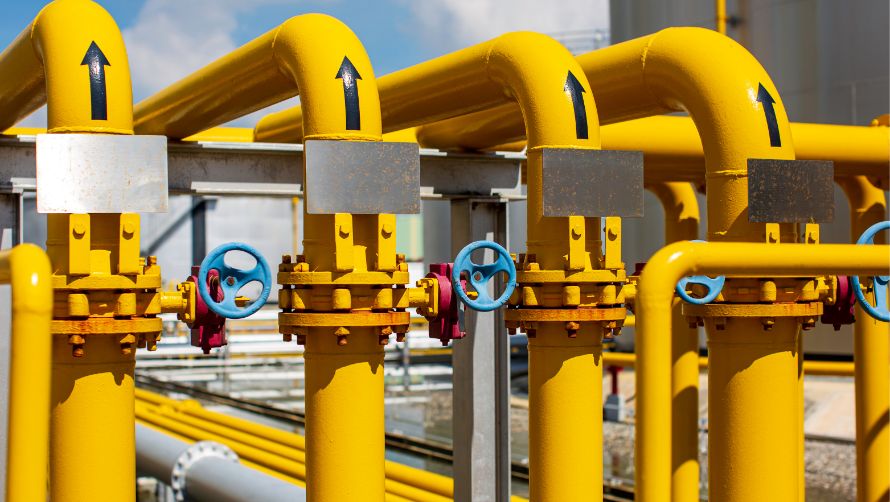
Gas treatment and sweetening processes are used to remove acidic and toxic components primarily hydrogen sulfide (H₂S) and carbon dioxide (CO₂) from raw hydrocarbon gas streams. These are essential steps before gas is used as fuel or feedstock in downstream petrochemical processes.
The most common method is amine treatment, where sour gas is contacted with aqueous amine solutions (like MEA, DEA, or MDEA) in an absorber column. The amine selectively absorbs H₂S and CO₂. The rich amine is then regenerated in a stripper, releasing the acid gases, which are often sent to Sulfur Recovery Units (SRUs) or flares.
Other methods include physical solvents (e.g., Selexol), molecular sieves, and membrane separation systems depending on process requirements.
Types of Gases Present
Hydrogen Sulfide (H2S)– Highly toxic, flammable, and corrosive; exposure can be fatal.
Carbon Dioxide (CO2)– Asphyxiant in enclosed spaces; can displace oxygen.
Amine Vapors (MEA/DEA/MDEA) – Corrosive and irritant; may be emitted from leaks or open tanks.
Hydrocarbon Vapors (CH4, C2H6, etc.) – Flammable gases that can co-exist in sour gas streams.
Sulfur Dioxide (SO2)– May be present in downstream SRUs or flares; toxic and acidic.
Amine Absorber & Stripper Columns
Tall towers where gas and amine interact for acid gas removal and regeneration. Leaks may occur at high-pressure zones, flanges, and sight glasses.
Fixed Point Detectors: Around column bases, overhead lines, vent points, and reboiler sections.
Portable Detectors: During inspection or maintenance of trays, manways, or exchanger connections.
Amine Circulation Pumps & Piping
Pumps circulate lean/rich amine; leaks may occur at mechanical seals, valve packs, or connections.
Fixed Point Detectors: Near pump bases, valve manifolds, and transfer headers.
Portable Detectors: For routine inspections, seal checks, and post-maintenance leak verification.
Rich/Lean Amine Exchangers
Transfers heat between rich and lean amine streams; susceptible to internal and external leaks.
Fixed Point Detectors: : Around exchanger shells, tube sheets, and condensate lines.
Portable Detectors: During tube inspection, flange opening, or exchanger bypass operations.
Flash Tanks & Amine Storage Vessels
Used to separate hydrocarbons or store amine; can emit vapors through vents or during handling.
Fixed Point Detectors: :Near tank vents, breathing valves, and overflow lines.
Portable Detectors: While sampling, transferring amine, or opening tank access.
Acid Gas Disposal System (to SRU or Flare)
Transfers H₂S-rich gas to disposal units; critical leak points include piping, control valves, and flare knock-out drums.
Fixed Point Detectors: :Near acid gas headers, flare stacks, or SRU inlets.
Portable Detectors: For safety checks around disposal line maintenance and during startup/shutdown activities.
Storage, Transfer & Loading Operations

Storage, transfer, and loading operations are integral to every petrochemical plant, involving the temporary containment and movement of raw materials, intermediates, and final products.
Storage includes atmospheric or pressurized tanks, bullets, spheres, and drums, depending on the chemical’s volatility and hazard level. Transfer occurs via pumps, pipelines, and loading arms, while loading/unloading involves tank trucks, railcars, ships, or barges.
These operations are high-risk for leaks due to the movement of fluids, fluctuating pressures, open systems (vents/breathers), and human intervention. Strict safety, grounding, and vapor control practices are necessary.
Types of Gases Present
Volatile Organic Compounds (VOCs)– Common in gasoline, solvents, and petrochemical products; contribute to air pollution and health hazards.
Hydrocarbon Vapors (C₁–C₁₀+) – Highly flammable gases from fuels, naphtha, and LPGs.
Hydrogen Sulfide (H2S) – May be present in sour crude or products; toxic even in small quantities.
Ammonia, Chlorine, or Other Toxic Gases – Depending on the stored product, storage areas may involve other hazardous gases.
Inert Gases (N2, CO2) – Used for blanketing but can cause asphyxiation in confined spaces.
Storage Tank Vents & Breathers
Tanks may emit vapors through vents during breathing (due to temperature/pressure changes) or filling.
Fixed Point Detectors: Near fixed-roof and floating-roof tank vents, pressure-vacuum valves, and dike areas.
Portable Detectors: During manual gauging, maintenance, or roof seal inspection.
Tank Bottom and Roof Seals
Floating-roof seals and tank bottoms can leak due to wear, corrosion, or structural failure.
Fixed Point Detectors: Perimeter of the tank at multiple heights, especially roof joint and dike zone.
Portable Detectors: Used for seal inspections, leak detection surveys, and confined space entry preparation.
Product Transfer Pumps & Valves
Pumps and valves connecting tanks to process units or loading areas can leak due to seal failure or mechanical stress.
Fixed Point Detectors: : Around pump skids, valve clusters, and control panels
Portable Detectors: During packing gland inspections, valve operation, or equipment service
Truck, Railcar & Ship Loading/Unloading
Product transfer interfaces with mobile containers have high potential for leaks and spills
Fixed Point Detectors: :At loading arm pivots, vapor recovery units, and hose connection points.
Portable Detectors: During coupling/decoupling operations, hose testing, or emergency response drills.
Pipeline Manifolds & Pig Launchers/Receivers
Points where products are diverted or pipeline cleaning occurs are prone to mechanical leaks.
Fixed Point Detectors: :Around block valve stations, pig trap areas, and header junctions.
Portable Detectors: Used during pigging operations, valve maintenance, or line pressurization checks.
Utilities & Ancillary Systems (Boilers, Compressors, Cooling, etc.)
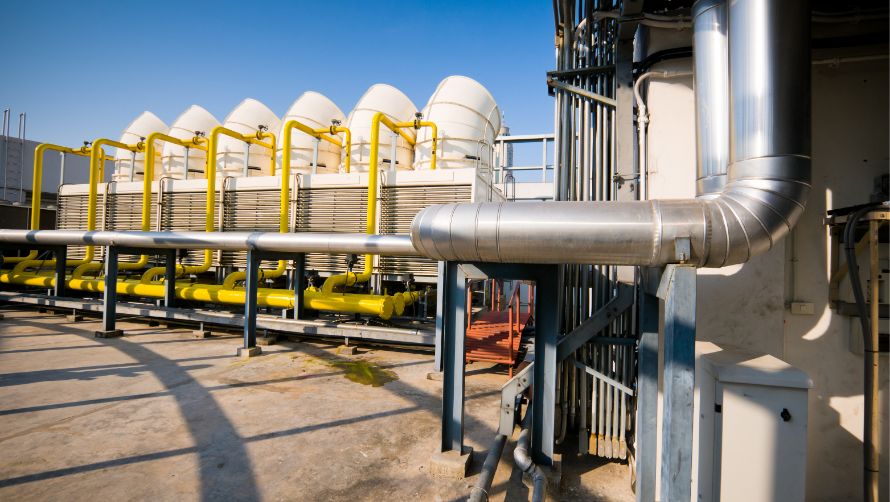
Utilities and ancillary systems provide the essential energy, cooling, and support services required for petrochemical plant operations. These systems do not produce chemicals directly but ensure smooth and safe operation of core units.
Key components include:
• Boilers & Steam Systems: Provide process steam and heating.
• Compressors & Air Systems: Compress gases for use in process units or utility air networks.
• Cooling Towers & Heat Exchangers: Remove heat from process streams.
• Nitrogen & Inert Gas Systems: Used for blanketing, purging, and explosion prevention.
• Power Generation Units: May include gas turbines or diesel generators for electrical power backup or co-generation.
Although considered supporting systems, they handle flammable, toxic, or asphyxiating gases, and are critical points for gas leak monitoring and control.
Types of Gases Present
Methane (CH4) – Common in fuel gas lines and compressor systems; highly flammable.
Hydrogen (H2)– May leak from utility gas compressors or used as a reducing agent; highly flammable and diffusive.
Carbon Monoxide (CO) – Toxic gas, can be emitted from boilers and combustion systems.
Oxygen (O2) – Leaks from enriched air systems can increase fire risk.
Nitrogen (N2) & CO2 – Used as inert gases; leak risks relate to oxygen displacement and asphyxiation in confined areas.
Ammonia (NH3) or Chlorine (Cl2) – In facilities where used for water treatment or cooling systems.
Steam Boilers & Fuel Gas Supply Lines
Fuel-fed boilers may leak flammable gas (natural gas or hydrogen) or generate CO during incomplete combustion.
Fixed Point Detectors: Near fuel gas supply headers, burners, and boiler rooms.
Portable Detectors: During inspection of burner tips, pipe flanges, or post-maintenance leak checks.
Compressors (Air, Hydrogen, Hydrocarbons)
Compressors are prone to leaks at seals, lubrication systems, and high-pressure fittings.
Fixed Point Detectors: Around compressor skids, seal gas systems, and discharge headers.
Portable Detectors: During seal monitoring, lubricant line inspection, and vibration checks.
Cooling Towers & Heat Exchangers
Leakage of hydrocarbons, toxic gases, or cooling water contamination can occur due to tube rupture or cross-contamination.
Fixed Point Detectors: : Around exchanger shells, bundle areas, and cooling water return lines.
Portable Detectors: When inspecting for leaks, especially during shutdowns or turnaround maintenance.
Nitrogen Supply & Inert Gas Distribution
Inert gas leaks can lead to oxygen displacement, especially in enclosed spaces.
Fixed Point Detectors: :In enclosed nitrogen manifolds, valve stations, or storage areas.
Portable Detectors: For oxygen level checks before confined space entry and during purging.
Power Generation / Turbine Systems
Gas turbines may have flammable gas leaks or produce CO and NOx emissions during startup or upset
Fixed Point Detectors: Around turbine enclosures, fuel lines, and exhaust areas.
Portable Detectors: During startup inspections, vibration checks, or enclosure access.
Hydrogen Production (SMR & POX)
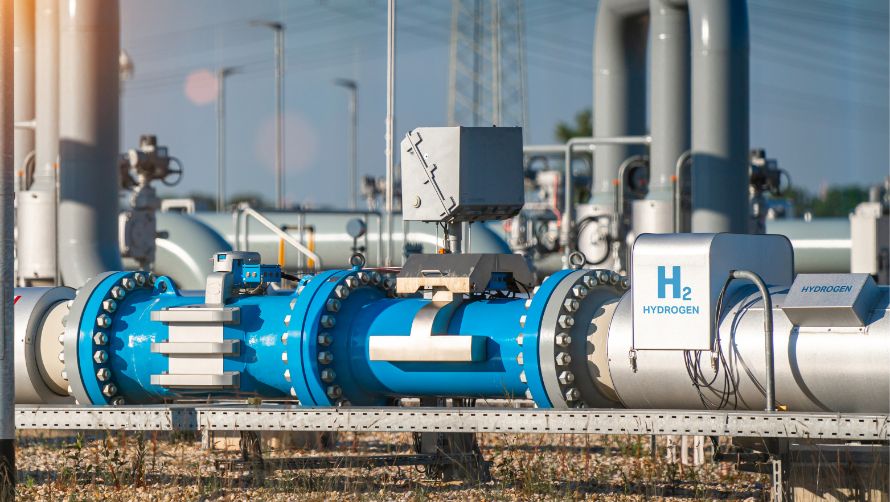
Hydrogen production is a critical utility and feedstock process in petrochemical plants. It is commonly produced via:
- Steam Methane Reforming (SMR): Methane (CH₄) reacts with steam over a nickel-based catalyst to produce hydrogen (H₂) and carbon monoxide (CO), followed by a water-gas shift reaction to convert CO into additional H₂ and CO₂.
- Partial Oxidation (POX): Heavier hydrocarbons or fuel oils are partially oxidized with oxygen/air to generate syngas (H₂ + CO), often followed by water-gas shift for additional hydrogen.
These processes operate at very high temperatures and pressures, and involve flammable, toxic, and asphyxiating gases. Hydrogen is extremely light and diffusive, making leaks difficult to detect without dedicated sensors.
Types of Gases Present
Methane (CH4) – Flammable; leaks may occur in reformer feed systems
Hydrogen (H2)– Highly flammable and diffusive; forms explosive mixtures in air.
Carbon Monoxide (CO) – Highly toxic; interferes with oxygen transport in blood.
Carbon Dioxide (CO2) – Asphyxiant in confined spaces; produced in large quantities.
Steam/Hot Water Vapors – May carry dissolved gases or chemicals under high pressure.
Reformer Furnace & Tubes
Core reaction zone in SMR where methane reacts with steam. Tubes operate under extreme heat and stress, risking leaks of flammable gases.
Fixed Point Detectors: Around furnace radiant section, flue gas ducts, and burner systems.
Portable Detectors: During furnace inspections, burner adjustments, or after shutdowns.
Syngas (H₂ + CO) Transfer Lines
High-pressure lines carrying hydrogen and carbon monoxide to shift converters or downstream processes.
Fixed Point Detectors: Along syngas headers, flange connections, and compressor areas
Portable Detectors: During line isolation, maintenance, or flange tightening.
Shift Reactors & Heat Exchangers
Convert CO to CO₂ and generate more hydrogen. Leaks may involve high-pressure CO, H₂, or water-gas.
Fixed Point Detectors: : Near reactor inlets/outlets, exchanger shell sides, and relief valves.
Portable Detectors: For valve inspections, sample line work, and during shutdowns.
Hydrogen Compressors & Purification Units (e.g., PSA)
Compress hydrogen and remove impurities. Leak-prone areas include compressor seals, valve packs, and PSA valves.
Fixed Point Detectors: Compressor skids, PSA outlet headers, and vent manifolds
Portable Detectors: While inspecting pressure seals, during adsorbent bed changes, or calibration of purifiers
Feed Gas and Steam Supply Lines
Carry methane and steam to the reformer; leaks may occur at control valves, steam traps, or mixing headers.
Fixed Point Detectors: Around feed preheaters, steam flow meters, and junction points.
Portable Detectors: During trap inspection, valve checks, or during line decommissioning.
Flare & Emergency Relief Systems
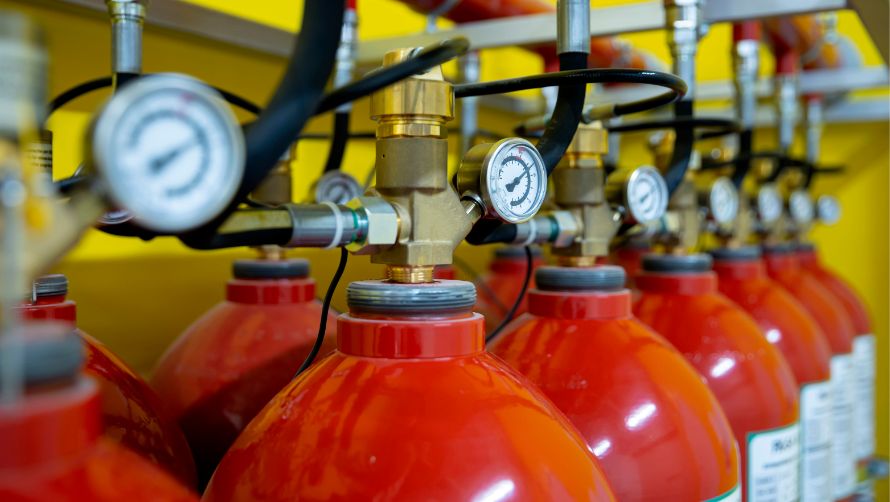
Flare and emergency relief systems are critical safety infrastructure in petrochemical plants designed to safely dispose of excess gases during process upsets, equipment malfunctions, startups, shutdowns, or emergency depressurizations.
These systems collect vented or purged gases from various process units and burn them at high temperatures at the flare tip to prevent the release of harmful or flammable substances into the atmosphere.
The system includes flare headers, knockout drums, seal legs, pilot burners, flare stacks, and smokeless combustion systems. Though designed for controlled burning, leaks may occur in upstream piping or during non-combustion events.
Types of Gases Present
Hydrogen (H2)– Highly flammable; vented during unit depressurization.
Carbon Monoxide (CO) – Incomplete combustion in flares can lead to CO formation
Sulfur Compounds (e.g., H2S, SO2) – In sulfur recovery and sour gas flaring; toxic and corrosive.
VOCs and Particulate Matter – Emitted during smoky flaring or pilot flame instability
Hydrocarbons (C₁–C₁₀) – Flammable gases vented from process units.
Flare Header Piping & Valve Stations
Collects relief gases from various units; may develop leaks due to corrosion, vibration, or valve malfunction.
Fixed Point Detectors: Along the flare header corridor, isolation valves, and flange connections.
Portable Detectors: During flange tightening, leak surveys, and mechanical maintenance.
Knockout Drums & Seal Legs
Remove liquids from vented gases; leaks may occur at drains, vents, or sight glass ports
Fixed Point Detectors: Around knockout drum base, vent points, and seal leg overflow lines.
Portable Detectors: During drum draining, level gauge checks, or maintenance shutdowns.
Pilot Burners & Ignition Systems
Fixed Point Detectors: : Near pilot lines, flare stack base, and ignition panels.
Portable Detectors: During flare lighting, inspection rounds, or remote ignition checks.
Elevated Flare Stack Area
Though combustion occurs at height, wind and poor combustion can lead to ground-level gas drift or flameout scenarios.
Fixed Point Detectors: Perimeter of flare base area, especially in downwind zones.
Portable Detectors: For monitoring flare performance, detecting unburned gases, and after flame loss events.
Pressure Relief Devices & Blowdown Valves (Upstream)
These devices release gas into the flare system during overpressure; leaks may occur at valve seats or vent lines.
Fixed Point Detectors: Near pressure relief valves, blowdown headers, and isolation valves.
Portable Detectors: During valve testing, calibration, or thermal relief checks.
Hydrotreating / Hydrocracking
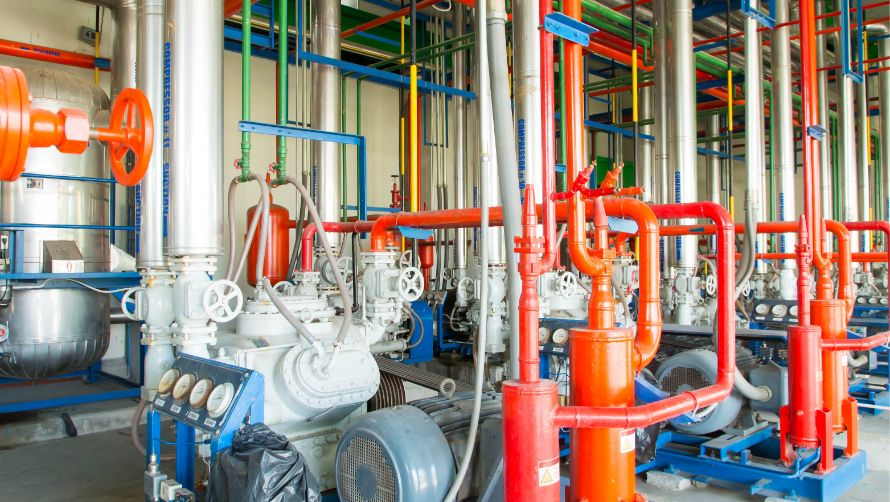
Hydrotreating and hydrocracking are catalytic refining processes widely used in petrochemical plants to remove impurities and upgrade hydrocarbon feedstocks (naphtha, diesel, gas oil) into more valuable and cleaner products.
- Hydrotreating removes sulfur, nitrogen, metals, and unsaturates by reacting feedstocks with hydrogen over a catalyst.
- Hydrocracking breaks down larger hydrocarbon molecules into lighter, high-value products such as jet fuel, diesel, or petrochemical feedstocks, using hydrogen and bifunctional catalysts.
Both processes are hydrogen-intensive, operate under high pressure and temperature, and involve toxic, flammable, and corrosive gases, making gas detection essential for safety and reliability.
Types of Gases Present
Hydrogen (H2)– Used in large volumes; highly flammable and diffusive.
Carbon Monoxide (CO) – May occur from incomplete combustion or catalyst degradation.
Hydrogen Sulfide (H2S) – Formed during sulfur removal; extremely toxic and corrosive
Ammonia (NH3) – May form from nitrogen compounds in feed; toxic and irritating.
Hydrocarbons (C4–C12) – Flammable vapors from various process stages.
Reactor System (Hydrotreating / Hydrocracking Reactors)
High-pressure catalytic reactors; prone to leaks at inlet/outlet lines, manways, or flange connections.
Fixed Point Detectors: Near reactor base, heat tracing manifolds, and hydrogen injection points.
Portable Detectors: During flange torquing, insulation removal, and post-maintenance checks.
Hydrogen Supply & Injection Lines
Fixed Point Detectors: : Along hydrogen header routes, injection points, and mixer stations.
Portable Detectors: For real-time leak tracing during operations or purging activities.
High-Pressure Separators & Fractionators
Separate treated products from unreacted hydrogen and light gases. Leak potential exists at draw lines, overheads, and seal pots
Fixed Point Detectors: Around separator vessels, distillation column tops, and pump-around systems.
Portable Detectors: During column tray inspections or valve maintenance
Sour Water Strippers / Amine Systems (Sulfur Removal)
Treat water containing H₂S and ammonia; leaks can expose operators to toxic gases
Fixed Point Detectors: Near amine contactors, sour water tanks, and stripper overheads.
Portable Detectors: During system draining, pump seal checks, or vapor recovery line inspection.
Compressor Skids (Recycle Hydrogen Compressors)
Compress hydrogen for recycling; leak-prone areas include seals, lubrication systems, and suction/discharge lines.
Fixed Point Detectors: Near compressor discharge, motor enclosures, and interstage piping.
Portable Detectors: While checking vibration points, oil seals, or after preventive maintenance.
Ethylene Oxide / Ethylene Glycol Production
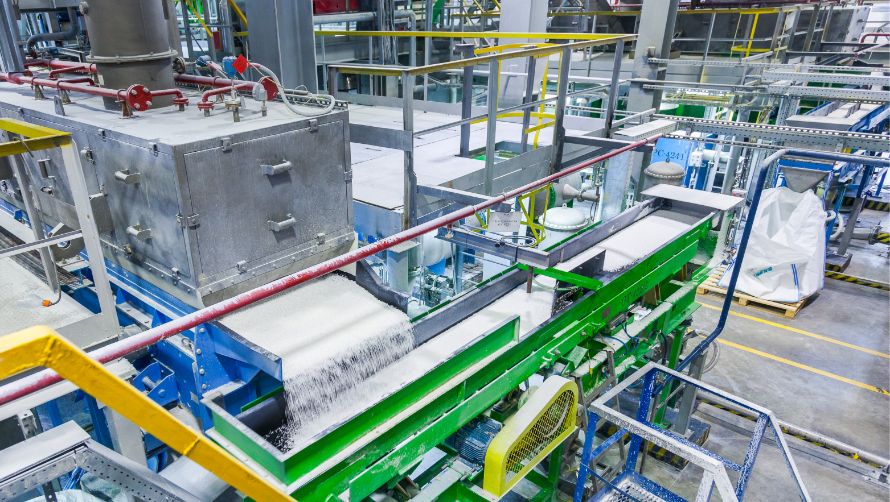
Ethylene Oxide (EO) and Ethylene Glycol (EG) are key petrochemical intermediates produced through a two-stage process:
1. Ethylene Oxide Production: Ethylene reacts with oxygen over a silver catalyst to form EO in a highly exothermic reaction. The process requires precise control due to EO’s reactivity and explosive nature.
2. Ethylene Glycol Production: EO is hydrolyzed with water to form mono-, di-, and tri-ethylene glycol. This is typically done in an absorption and purification sequence.
EO is a toxic, flammable, and highly reactive compound, requiring strict monitoring. Glycol units are less hazardous but still involve handling of combustible liquids and vapors under pressure.
Types of Gases Present
Ethylene Oxide (EO) – Toxic, carcinogenic, highly flammable; forms explosive mixtures in air.
Ethylene (C2H4) – Flammable; used as feedstock
Oxygen (O2) – Used in oxidation; may promote combustion.
Carbon Dioxide (CO2) – Byproduct of side reactions; an asphyxiant in confined areas.
Nitrogen (N2) – Used as purge/inert gas; asphyxiant in high concentrations.
EO Reactor & Circulation Loop
High-pressure oxidation reactor where ethylene reacts with oxygen. Leaks here can involve EO, ethylene, and oxygen under pressure.
Fixed Point Detectors: Around reactor inlet/outlet, oxygen blending skids, and circulation pumps.
Portable Detectors: During reactor inspections, seal checks, and gas blending maintenance.
EO Absorber & Stripper Columns
Fixed Point Detectors: : At column bases, condenser outlets, and vent headers.
Portable Detectors: During column cleaning, valve packing checks, or sample point access
EO Storage Tanks & Loading Bays
EO is stored under pressure or refrigeration; storage and loading are high-risk zones for leaks and vapor releases.
Fixed Point Detectors: Around tank breathing vents, transfer pumps, and loading arms.
Portable Detectors: During manual sampling, hose connections, or tanker loading/unloading
EO/EG Heat Exchangers & Pumps
Leakage may occur at seals, gaskets, or during thermal expansion. EO and EG vapors may also release during maintenance.
Fixed Point Detectors: Near pump seals, flange connections, and exchanger drain lines.
Portable Detectors: During gasket replacements, pump seal inspections, and equipment start-up.
Off-Gas Treatment & Vent Recovery Systems
Handle residual EO, CO₂, and ethylene; leaks can result from flare headers, vent condensers, or recovery columns.
Fixed Point Detectors: Near vent scrubbers, condensers, and relief valves.
Portable Detectors: When working on pressure relief systems or during off-gas line isolation.
Solvent Recovery & VOC Handling
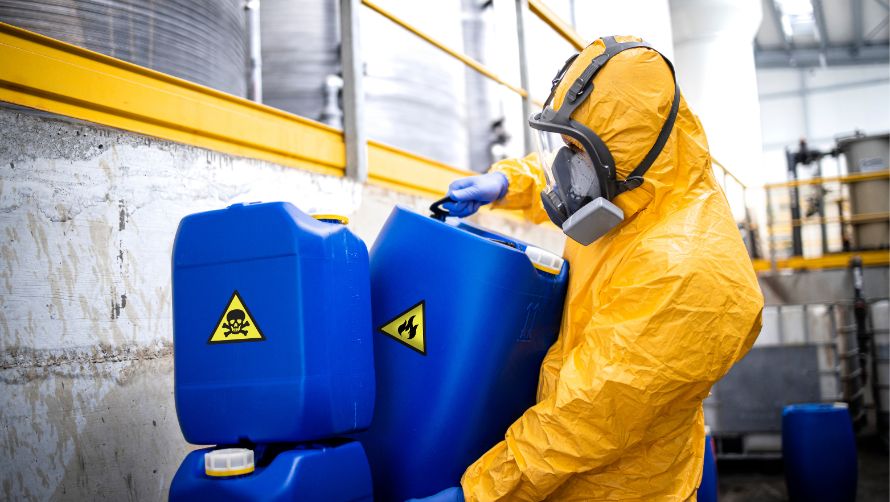
Solvent recovery and volatile organic compound (VOC) handling systems are critical in petrochemical plants to capture, treat, and recycle organic solvents and vapors that would otherwise be released into the atmosphere.
These systems are commonly integrated with units involving cleaning, extraction, reaction, and product purification where solvents such as benzene, toluene, xylene, methanol, and other VOCs are used or generated.
The process includes condensation, adsorption (activated carbon beds), absorption (scrubbers), membrane separation, or distillation. VOC handling is essential for environmental compliance, fire prevention, and worker health protection.
Types of Gases Present
Benzene, Toluene, Xylene(BTX) – Highly flammable, toxic, and potentially carcinogenic solvents.
Methanol/ Ethanol – Flammable solvents, can affect central nervous system.
Acetone / Ketones – VOCs that are flammable and irritating to eyes/respiratory system.
Chlorinated Hydrocarbons – Toxic and sometimes carcinogenic, used in specific solvent systems.
Other VOCs – From paints, coatings, degreasers, and chemical processing.
Solvent Storage Tanks
Solvents stored in large quantities may leak via tank roof seals, vents, or valves.
Fixed Point Detectors: Around tank vents, pump manifolds, and tank dike areas
Portable Detectors: During tank inspection, manual gauging, or sampling activities.
Solvent Transfer Pumps & Pipelines
Used to transfer solvents between units; prone to leaks at seals, gaskets, or isolation valves.
Fixed Point Detectors: At pump seals, pipeline junctions, and transfer areas.
Portable Detectors: While inspecting seals, connecting hoses, or during shutdown/start-up.
Condensers & Recovery Columns
Used to condense and purify solvents from process streams; leaks can occur at tube bundles or reboilers.
Fixed Point Detectors: Near condensate receivers, overhead vapor lines, and reflux systems.
Portable Detectors: During maintenance of exchanger tubes, valve packs, or overhead condensers.
Activated Carbon Beds / Scrubbers
Capture VOCs from vent streams; bed saturation, leaks, or improper regeneration can lead to emissions.
Fixed Point Detectors: Around adsorber inlet/outlet, regeneration lines, and vent points.
Portable Detectors: During bed replacement, regeneration cycles, or leak investigation.
Loading/Unloading Stations (Drums, Tankers, etc.)
VOCs escape during drum filling, tanker loading, or solvent dispensing; especially risky in open or hot environments.
Fixed Point Detectors: Around loading arm vaporizers, vapor recovery lines, and fill stations.
Portable Detectors: During hose changes, seal checks, or top/bottom loading operations
Waste Solvent Collection & Incineration Feed
Waste solvents are collected and often fed to incinerators; leaks can happen in temporary storage, lines, or pumps.
Fixed Point Detectors: Around collection tanks, incinerator feed lines, and staging drums.
Portable Detectors: While handling hazardous waste, connecting disposal lines, or sampling for disposal.
Chlor-Alkali & Vinyl Chloride Monomer (VCM) Production
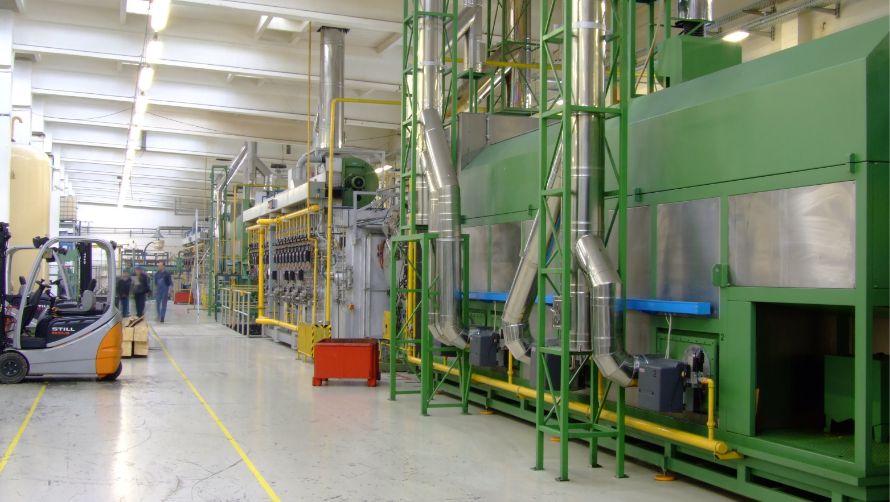
The Chlor-Alkali process produces chlorine (Cl₂), caustic soda (NaOH), and hydrogen (H₂) by electrolyzing brine (NaCl solution). It is a foundational step in many downstream chemical processes.
Vinyl Chloride Monomer (VCM) is a key intermediate used in the production of polyvinyl chloride (PVC). It is primarily produced by reacting ethylene with chlorine (via ethylene dichloride - EDC). The process includes chlorination, cracking of EDC to VCM, and purification.
These processes involve highly toxic, corrosive, and flammable gases, making continuous monitoring and robust leak detection critical for plant and worker safety.
Types of Gases Present
Hydrogen (H2)– Flammable; can accumulate in confined spaces and ignite easily.
Chlorine (Cl2) – Highly toxic, corrosive, and pungent; even low levels can cause respiratory damage.
Ethylene Dichloride (EDC) – Volatile, toxic, and potentially carcinogenic solvent.
Vinyl Chloride Monomer (VCM) – Flammable, carcinogenic gas; hazardous at low concentrations.
Hydrogen Chloride (HCl)– Corrosive and irritating acid gas, formed during cracking
Electrolyzers / Cell Room (Chlor-Alkali Process)
Electrolytic cells generate chlorine and hydrogen gases; leaks can occur at cell covers, piping, and manifolds.
Fixed Point Detectors: Around cell room perimeter, chlorine collection headers, and hydrogen outlets
Portable Detectors: During maintenance, cell inspections, and gasket or diaphragm replacements.
Chlorine Compressors & Liquefaction Units
Chlorine gas is compressed and liquefied for storage; leaks here pose high toxic exposure risks.
Fixed Point Detectors: Near compressor seals, refrigeration loops, and chlorine condensers.
Portable Detectors: During oil seal checks, drain line inspections, or gas transfer operations.
EDC Cracking Furnaces
EDC is thermally cracked to produce VCM; high temperatures and corrosive gases increase leak potential.
Fixed Point Detectors: : Near furnace outlet, quench towers, and cracked gas coolers.
Portable Detectors: During decoking, flange inspections, and valve servicing.
VCM Purification & Storage
VCM is purified and stored under pressure; it is a hazardous chemical regulated under strict emission controls.
Fixed Point Detectors: :Around distillation towers, VCM spheres, vents, and transfer pumps.
Portable Detectors: During storage tank sampling, pump seal maintenance, or valve operation.
Brine Handling & Dechlorination Systems
Brine preparation and chlorine neutralization systems may release residual chlorine or caustic vapors.
Fixed Point Detectors: Near brine filters, dechlorination tanks, and vent scrubbers
Portable Detectors: During neutralization, filter replacement, or overflow events.
Hydrogen Handling Systems
Hydrogen from the electrolyzer must be properly vented or reused; leaks can lead to fire or explosion.
Fixed Point Detectors: At hydrogen headers, flare vents, and blending units.
Portable Detectors: While inspecting flanges, sampling lines, or post-maintenance purging.
